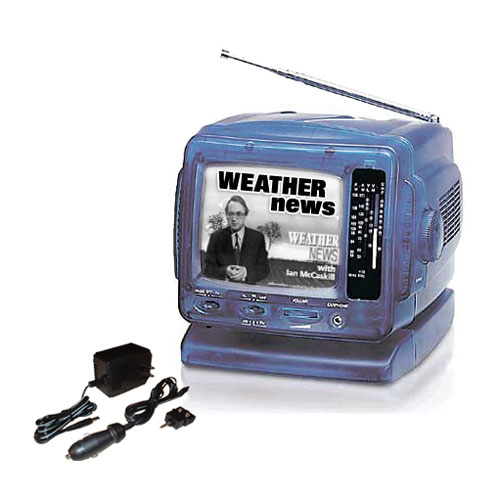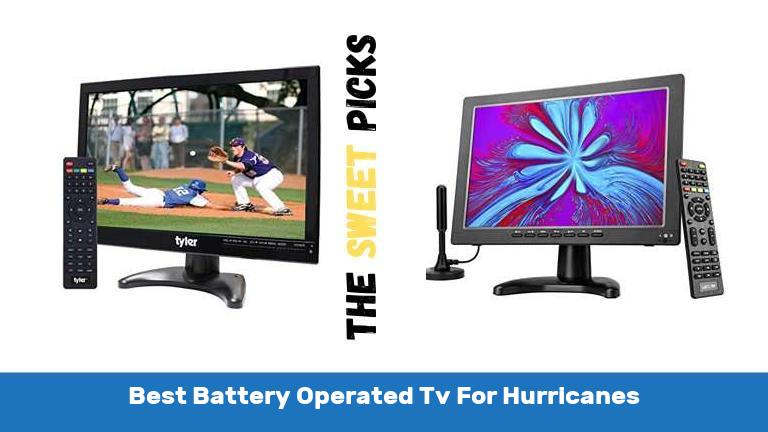Battery Powered Tv For Emergencies

In the face of increasingly frequent and severe weather events and widespread power outages, a new class of battery-powered televisions is emerging as a critical tool for emergency preparedness. These devices offer a lifeline to vital information when traditional power sources fail, providing access to news, weather alerts, and emergency broadcasts that can be crucial for safety and survival.
This article delves into the rise of battery-powered TVs, examining their capabilities, limitations, and potential impact on emergency communication strategies. We will explore the technology behind these devices, their practical applications during crises, and the perspectives of emergency management professionals and consumers alike, ensuring a comprehensive understanding of this evolving technology.
The Nut Graf: A Lifeline in the Dark
Battery-powered televisions are compact, portable devices designed to operate independently of the electrical grid, relying instead on rechargeable or disposable batteries. They offer a means of receiving critical information during power outages, allowing individuals and families to stay informed about developing situations and make informed decisions regarding their safety.
These TVs vary in size, features, and battery life, ranging from small, handheld models to larger, more feature-rich sets. Their primary function, however, remains consistent: to provide access to emergency broadcasts and news updates when traditional power sources are unavailable.
Capabilities and Limitations
The key advantage of battery-powered TVs is their independence from the power grid. During hurricanes, earthquakes, and other disasters that often knock out electricity, these devices can continue to function, providing access to vital information.
Many models also include built-in radios, further expanding their utility as emergency communication tools. Some advanced models even offer features like weather band reception, NOAA alerts, and USB charging ports for mobile devices.
However, battery-powered TVs are not without their limitations. Battery life is a critical factor, as prolonged use can drain power quickly.
Signal reception can also be an issue, particularly in remote areas or during severe weather. Furthermore, the screen size and resolution of smaller models may be limiting for some users.
Perspectives from Emergency Management
Emergency management agencies recognize the potential value of battery-powered TVs as part of a comprehensive emergency preparedness strategy. "Having access to reliable information is paramount during a crisis," states Sarah Miller, a spokesperson for the Federal Emergency Management Agency (FEMA).
"Battery-powered TVs can be a valuable tool for disseminating critical updates and instructions to the public when other communication channels are disrupted," she added.
However, these agencies also emphasize the importance of having multiple communication methods. Relying solely on a single device, even a battery-powered TV, is not advisable.
Robert Johnson, a local emergency coordinator, advises, "A layered approach is essential. Battery-powered TVs should be part of a broader emergency kit that includes a hand-crank radio, a weather radio, and other essential supplies."
Consumer Adoption and Market Trends
The market for battery-powered TVs has seen a steady increase in recent years, driven by growing awareness of emergency preparedness and the increasing frequency of natural disasters. Online retailers and electronics stores offer a wide variety of models, catering to different needs and budgets.
Consumer reviews highlight the importance of features like battery life, signal strength, and ease of use. Some users praise the peace of mind that these devices provide, while others express concerns about their reliability and cost.
Manufacturers are responding to consumer feedback by developing more efficient and feature-rich models. This includes improving battery technology, enhancing signal reception, and incorporating user-friendly interfaces.
The Future of Emergency Communication
Battery-powered TVs are likely to play an increasingly important role in emergency communication strategies in the future. As technology advances, we can expect to see further improvements in battery life, signal reception, and display quality.
Integration with other communication technologies, such as satellite connectivity and mobile apps, could also enhance their functionality and reach.
However, it is important to remember that battery-powered TVs are just one piece of the puzzle. A comprehensive approach to emergency preparedness, including a well-stocked emergency kit, a family communication plan, and awareness of local hazards, remains essential for ensuring safety and resilience in the face of adversity. This will ensure readiness for any emergency scenario.


















